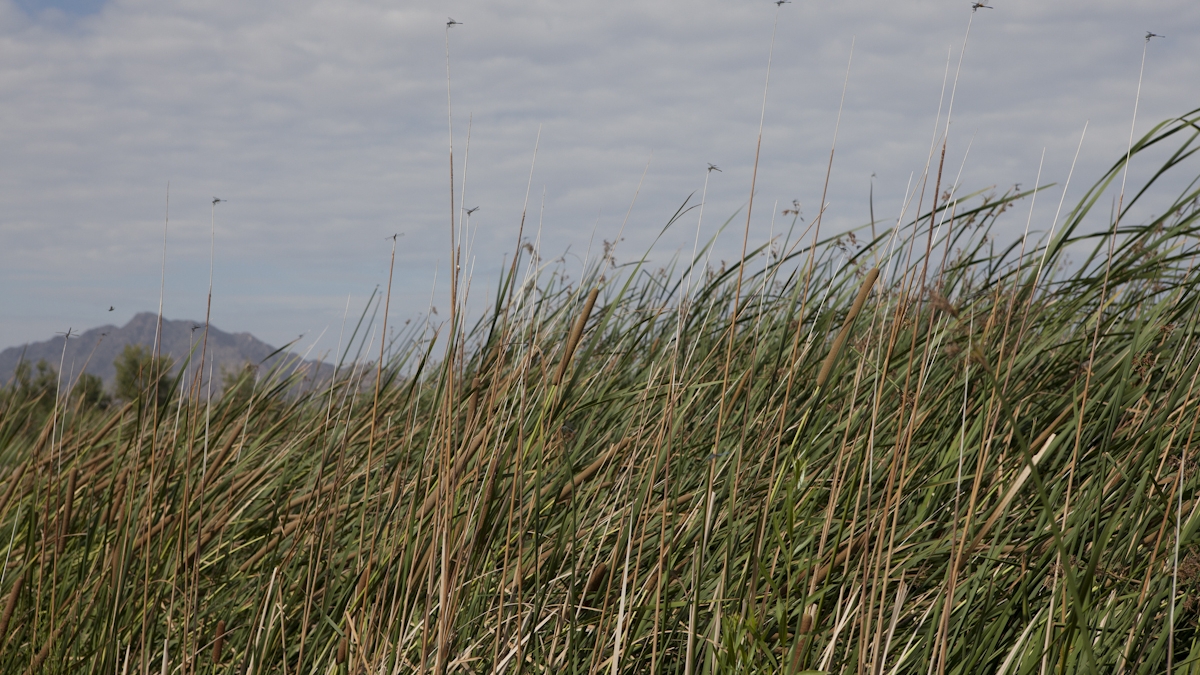Engaging in science through art

A photographer captures a moment. An ecologist collects data over the course of many years. The work of each shapes our understanding.
How might our understanding change if the artist and the scientist studied the same subject together? Researchers with Arizona State University’s Central Arizona – Phoenix Long-Term Ecological Research (CAP LTER) project, funded by the National Science Foundation, felt this was a collaboration worth pursuing.
The fruit of this collaboration – and 38 others like it – will be displayed at an upcoming exhibit, "Ecological Reflections," opening Feb. 28, in Arlington, Va., at the National Science Foundation.
Featured in the exhibit is the work of artist Edgar Cardenas, a doctoral student in ASU’s School of Sustainability.
A study of ecological systems
Over the past year, Cardenas has worked closely with CAP LTER scientists at the Tres Rios wetland, part of a wastewater treatment facility constructed by the City of Phoenix.
Researchers study the lush wetland as both a wildlife habitat and an ecological system that naturally filters excessive nutrients from wastewater. Cardenas, meanwhile, explores the place as an artist.
“Understanding ecological processes changes the way we understand a place, but it doesn’t necessarily translate to a cultural understanding,” says Cardenas. “We can build a terrarium and watch it change, but we don’t place a value – good or bad, happy or sad – on those changes.
“Questions of what we feel about a place – what it means to be in a place and experience it – are usually asked in the context of arts and humanities,” he continues. Cardenas’ work explores the relationship of people to wilderness and urban spaces, and the place humans have within the particular ecological systems explored by CAP LTER scientists.
Science or art?
Cardenas has photographed the Tres Rios wetland many times. His photos accompanied a news article on the important scientific work happening there. He produced a video that documents the work the scientists are doing.
But “using art to illustrate a scientist’s work is different from an arrangement where both the artist and the scientist are working in their own fields – the artist doing art and the scientist doing science,” says Barry Sparkman, arts and humanities representative for CAP LTER.
Sparkman says scientists are generally enthusiastic about collaborating with artists; they realize the collaboration is a way of engaging people with their work. But “when you work with an artist, the product is unknown,” points out Sparkman, and scientists usually have known products – funding, data, scholarly publications – that are the traditional markers of a successful academic career.
Value in collaboration
A now-retired scientist from another LTER site – Fred Swanson of the H.J. Andrews Experimental Forest LTER in Oregon – had long recognized the value of artist-scientist collaborations. As retirement approached and he had the leisure to pursue what he wished, Swanson began an effort to formalize an arts and humanities component of the LTER research. For the past several years, Swanson and like-minded LTER colleagues have worked to self-organize – to identify what they are, what their goals are, and how they will move forward.
The work of Swanson and his collaborators has resulted in the "Ecological Reflections" exhibit and a companion website. While funding for the effort is hard to come by, it’s clear that these artist-scientist collaborations are valued. This is the second year the National Science Foundation has included this exhibit as part of its annual mini-symposium on long-term ecological research.
“As artists we can push up against cultural values that are in tension with sustainability in a different way than scientists often approach sustainability,” says Cardenas. “The arts and humanities often show rather than tell; this adds further dimensionality to the discourse and affects the way we respond to place.” And that, he says, might just be a key to helping society understand and respond to science.